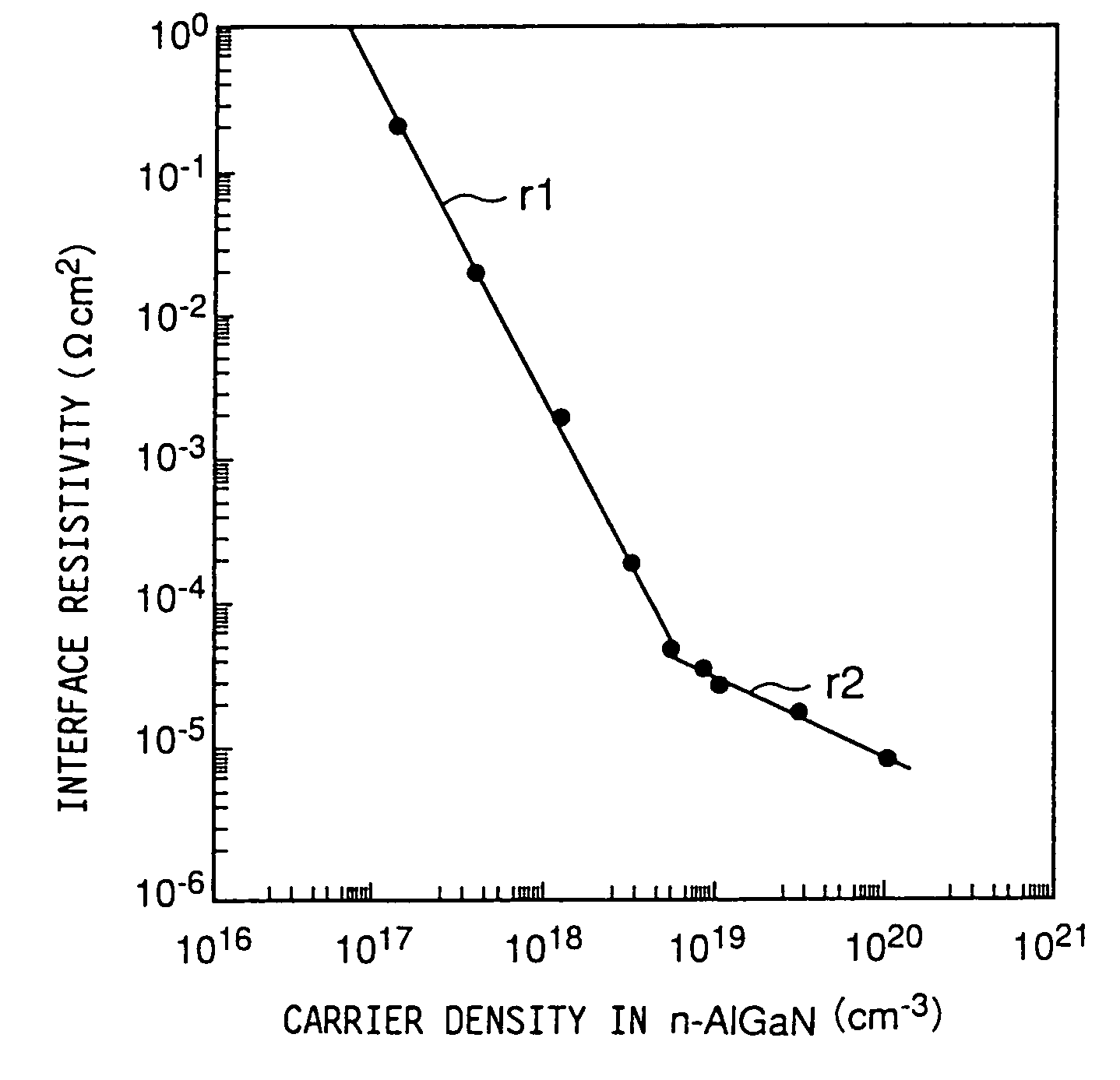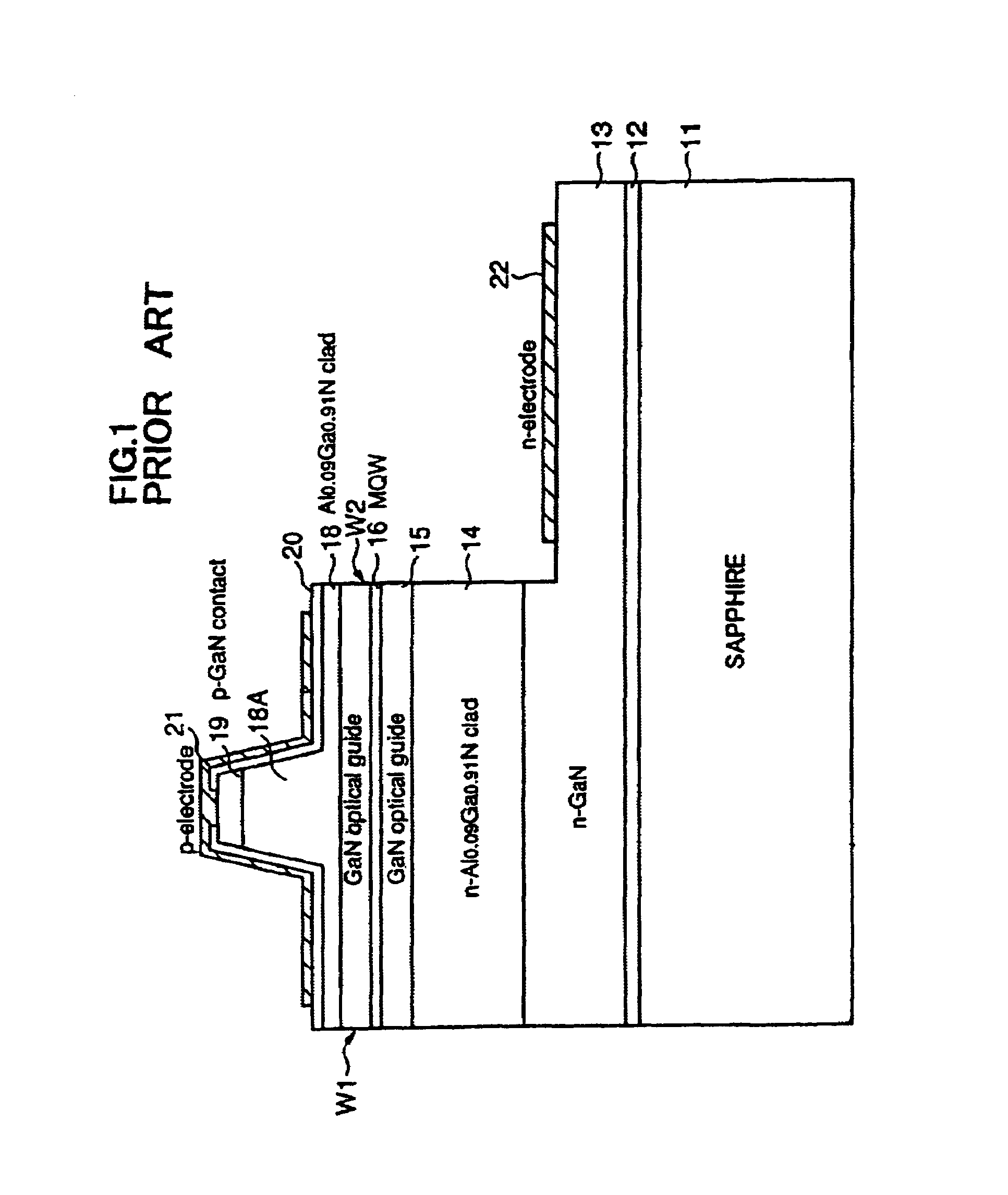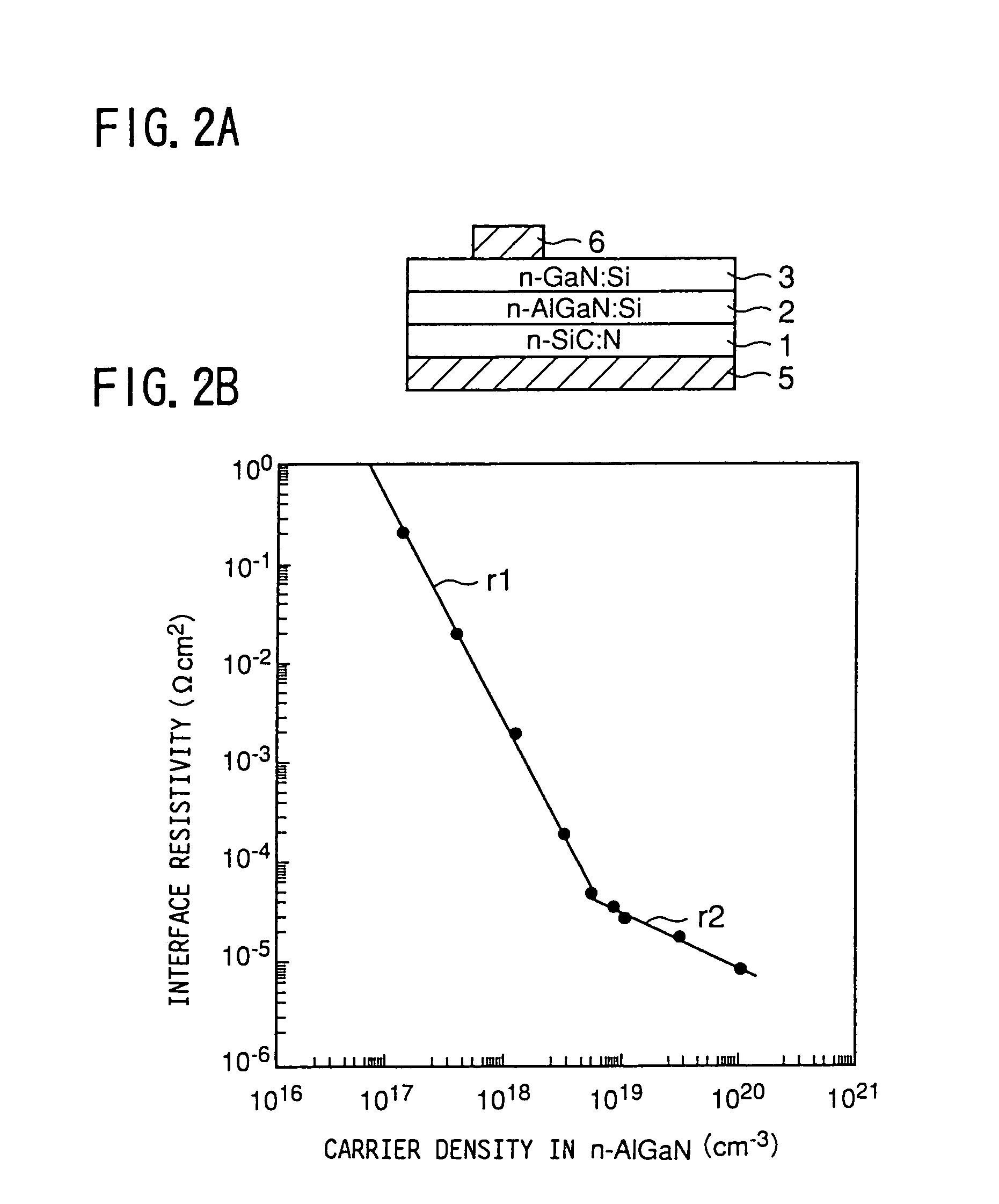Optical semiconductor device having an epitaxial layer of III-V compound semiconductor material containing N as a group V element
a compound semiconductor material and semiconductor technology, applied in the field of optical semiconductor devices, can solve the problems of difficult formation of the electrode on the bottom surface of the sapphire substrate b>11/b>, difficult preparation of the single crystal substrate of gan, etc., and achieve the effect of minimizing the resistance at the interface between the sic substrate and the algan buffer layer
- Summary
- Abstract
- Description
- Claims
- Application Information
AI Technical Summary
Benefits of technology
Problems solved by technology
Method used
Image
Examples
first embodiment
[First Embodiment]
[0113]In the description hereinafter, the mixed crystal having the composition AlxGa1-xN (0<x<0.4) will be designated merely as AlGaN. When the AlGaN mixed crystal has a composition falling in the foregoing range (0<x<0.4), the doping of AlGaN is possible. Further, the AlGaN mixed crystal having such a composition can be grown on an SiC substrate with a flat and smooth top surface. The epitaxial growth of the AlGaN mixed crystal is typically conducted by an MOVPE process, wherein the epitaxial layer thus formed shows a flat and smooth top surface when the deposition is made under a pressure of 100 Torr and the AlGaN mixed crystal contains Al with an atomic fraction x of 0.09 or more.
[0114]Thus, it is possible to construct a GaN-family laser diode on an n-type SiC substrate covered by an n-type AlxGa1-xN buffer layer, by depositing desired epitaxial layers of GaN or a mixed crystal of GaN. The laser diode thus formed typically oscillates at the wavelength of 420 nm ...
second embodiment
[Second Embodiment]
[0167]During the experimental investigation on the GaN-family laser diode 100 described with reference to FIGS. 6A and 6B, the inventor of the present invention has discovered a relationship shown in FIG. 7 between the threshold current and the thickness of the epitaxial layers interposed between the SiC substrate 41 and the active layer structure 40, wherein the vertical axis represents the threshold current density of the laser diode while the horizontal axis represents the total thickness of the epitaxial layers interposed between the SiC substrate 31 and the active layer structure 40.
[0168]Referring to FIG. 7, the threshold current generally decreases with increasing thickness in the epitaxial layers interposed between the substrate 31 and the active layer 40 and that the decrease occurs sharply until the total thickness of the epitaxial layers reach the value of about 1.6 μm.
[0169]While the reason of this phenomenon is not clearly understood, it is probable t...
third embodiment
[Third Embodiment]
[0179]In the ridge-type laser diode 100, 200 or 210 described before, the control of transversal mode laser oscillation in the active layer structure 40 is achieved by forming a mesa structure in the upper cladding layer 53 as explained before.
[0180]In the ridge-type laser diode having such a structure, it is necessary to form the mesa structure to have a width of less than about 2 μm in order to achieve a satisfactory control of the transversal mode oscillation, while the formation of such a narrow mesa structure has been difficult. Further, the foregoing conventional ridge-type laser diode has a drawback in that the contact area between the electrode 62 and the contact layer 54 is reduced inevitably when the width of the mesa structure is thus reduced below 2 μm. It should be noted that the width of the contact window formed in the SiO2 film 61 is reduced together with the width of the mesa structure, while formation of such a very small contact window in the SiO...
PUM
 Login to View More
Login to View More Abstract
Description
Claims
Application Information
 Login to View More
Login to View More - R&D
- Intellectual Property
- Life Sciences
- Materials
- Tech Scout
- Unparalleled Data Quality
- Higher Quality Content
- 60% Fewer Hallucinations
Browse by: Latest US Patents, China's latest patents, Technical Efficacy Thesaurus, Application Domain, Technology Topic, Popular Technical Reports.
© 2025 PatSnap. All rights reserved.Legal|Privacy policy|Modern Slavery Act Transparency Statement|Sitemap|About US| Contact US: help@patsnap.com



